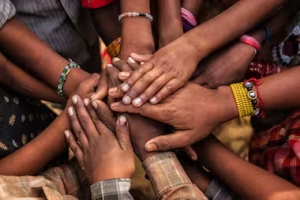GS1 – Indian Society

Context:
According to the World Bank’s Spring 2025 Poverty and Equity Brief, India has emerged as not only the fourth-largest economy globally but also among the most equitable societies.
India’s Performance on Equity Metrics
- Gini Index Ranking:
India ranks 4th globally in income equality with a Gini Index of 25.5, trailing only the Slovak Republic (24.1), Slovenia (24.3), and Belarus (24.4). - Trend of Improvement:
India’s Gini Index has declined from 28.8 in 2011 to 25.5 in 2022, indicating sustained efforts in achieving social equity alongside economic expansion.
Category of Inequality
- Moderately Low Inequality:
India is placed in the “moderately low inequality” category (Gini score between 25–30). Only 30 countries globally fall under this range, including Iceland, Norway, Finland, Belgium, Poland, and UAE.
Poverty Reduction Achievements
- Sharp Decline in Extreme Poverty:
Extreme poverty has fallen from 16.2% in 2011-12 to 2.3% in 2022-23 (5.3% using the updated $3/day threshold), lifting around 171 million people out of extreme poverty. - International Comparison:
India’s income equality is significantly better than China (Gini 35.7) and the United States (41.8). It outperforms every G7 and G20 nation in this regard.
State-Wise and Urban-Rural Progress
- Regional Contribution:
Uttar Pradesh, Maharashtra, Bihar, West Bengal, and Madhya Pradesh, which collectively had 65% of India’s extreme poor in 2011-12, accounted for two-thirds of the poverty reduction by 2022-23. - Urban-Rural Comparison:
- Rural poverty fell from 18.4% to 2.8%
- Urban poverty dropped from 10.7% to 1.1%
Key Government Interventions Enhancing Equity
- Jan Dhan Yojana:
Over 55.69 crore accounts opened (as of June 2025), expanding access to financial services and government schemes. - Aadhaar & Digital Identity:
More than 142 crore Aadhaar cards (as of July 2025) ensure accurate, targeted delivery of benefits. - Direct Benefit Transfer (DBT):
Has reduced leakages in welfare delivery with savings of ₹3.48 lakh crore (up to March 2023). - Ayushman Bharat:
Offers ₹5 lakh health coverage per family; 41.34 crore cards issued (as of July 2025). - Stand-Up India Scheme:
Provides loans between ₹10 lakh to ₹1 crore for SC/ST and women entrepreneurs; over 2.75 lakh applications sanctioned (July 2025). - PM Garib Kalyan Anna Yojana (PMGKAY):
Launched during COVID-19, continues to provide food security to vulnerable populations. - PM Vishwakarma Yojana:
Supports traditional artisans via toolkits, loans, digital training, and marketing. 29.95 lakh individuals registered as of July 2025.
Understanding the Gini Index
- Definition:
The Gini Index measures income, wealth, or consumption inequality on a scale from 0 (perfect equality) to 100 (complete inequality). - Interpretation:
A lower score implies greater equality in income distribution. India’s score of 25.5 reflects a relatively equitable society. - Lorenz Curve Tool:
- Plots the cumulative share of income versus the cumulative population share.
- The farther the Lorenz curve from the line of equality, the greater the inequality.
- The Gini Index represents the area between the Lorenz Curve and the line of perfect equality as a percentage of the total area under the line.




